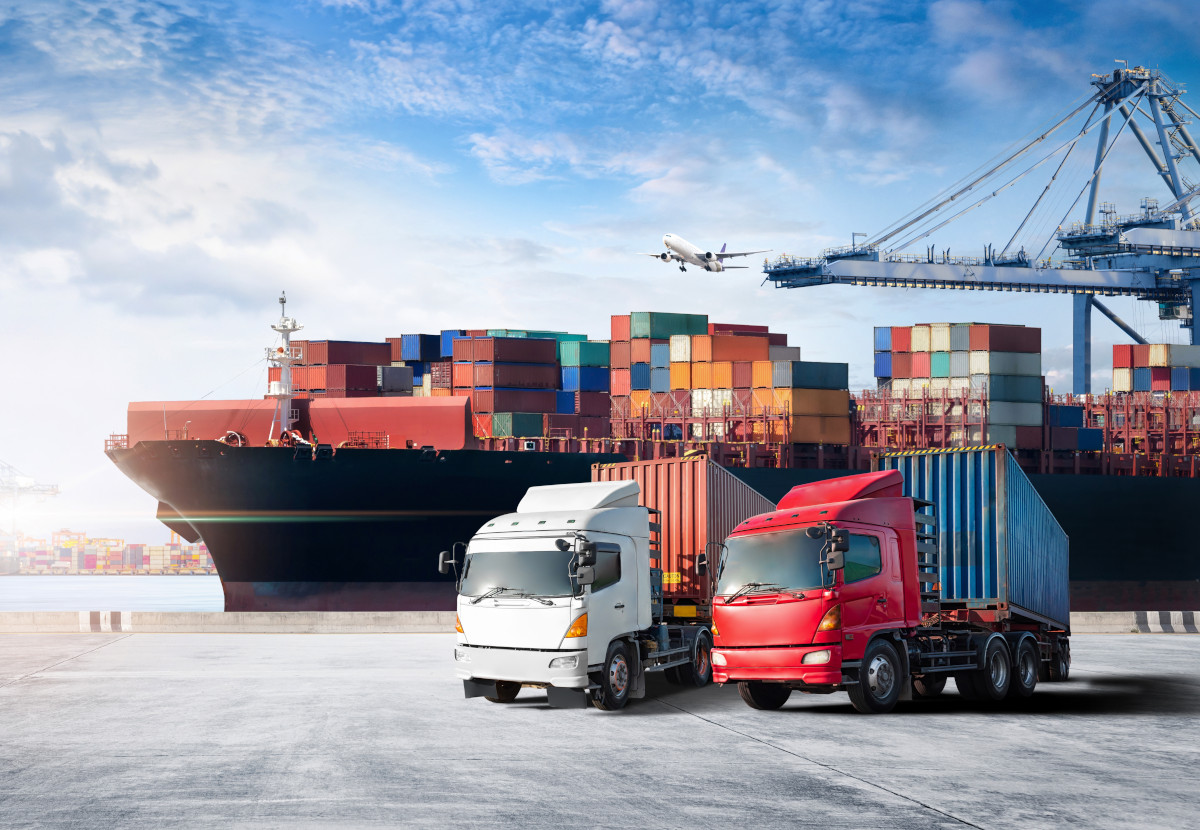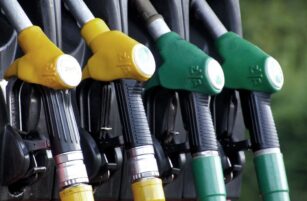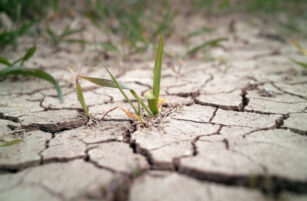Opinion Focus
- The global freight industry has experienced a bumpy few years.
- While earning potential has increased, challenges have also arisen in the form of the Ukraine invasion, protectionist measures, labour shortages and rising costs.
- We provide a rundown of the biggest chokepoints and their causes.
The supply chain has faced continuous issues over the past two years. From strikes to energy supply issues, farmer and shipping firms alike are struggling to keep abreast of new developments. Now, as more and more problems seem to be hitting the headlines each day, Czapp breaks down the main chokepoints for the supply chain and their potential long-term implications.
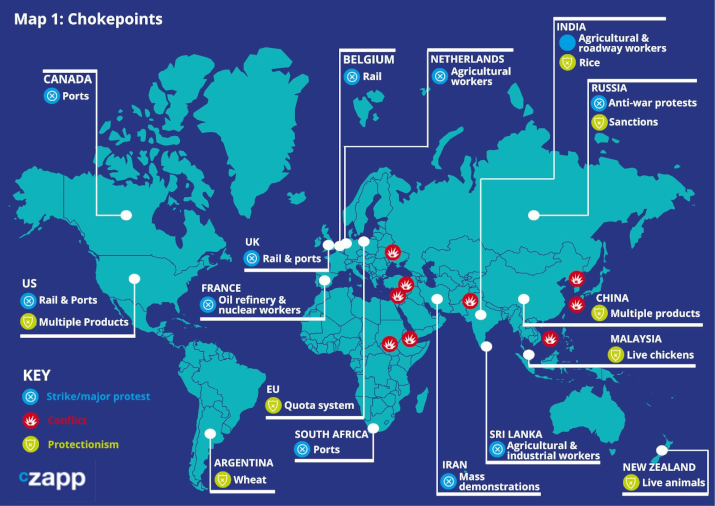
Strikes and Protests Derail Logistics
As the cost of living rises, salaries are not keeping pace with inflation. This has led to an environment of widespread strike and protest activity all around the world.
Not only are agricultural workers protesting in The Netherlands, India and Sri Lanka, but the disruption is being felt further down the supply chain. In North America, South Africa and Europe in particular, several ongoing rail and port disputes are derailing the transit of goods.

There is also mass unrest in locations such as Iran and Russia, where citizens are protesting against mobilisation.
More protests with impacts on the supply chain are happening in France’s energy industry. Not only are oil refineries staging a prolonged strike but strikes at the country’s three nuclear reactors are delaying essential maintenance work.
The impacts of these strikes are far-reaching. Strike action at South Africa’s state-owned logistics firm Transnet is impacting the country’s mining industry. According to the Minerals Council of South Africa, mineral export harbours are currently operating at 12% to 30% of their usual daily averages.
South Africa is one of the world’s biggest coal and iron ore exporters. Disruption to these activities is sure to have a profound impact to several industries throughout the world.
Conflict Adds Fuel to the Fire
One of the biggest ongoing conflicts is the Russian invasion of Ukraine, which has proven to be a significant challenge for food supply chains since the beginning of the year.
Ukraine and Russia combined supply over a quarter of the world’s grain exports, with heavy concentration in the Middle East and North Africa. Russia’s posit ion as a top fertiliser and energy exporter is challenging Brazil and Europe alike as sanctions are applied to the Eastern European giant.
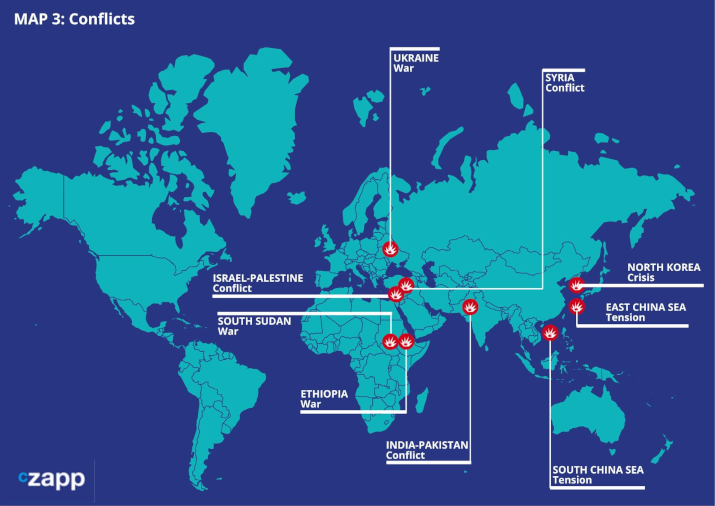
Several conflicts have been simmering for many years, such as the India-Pakistan conflict, the Israel-Palestine conflict and the political uncertainty in Syria.
However, other tensions have a much more direct impact on the food supply chain. Tensions in the East China Sea and the South China Sea are extremely complex, but any military escalation threatens to derail trillions of dollars of global trade.
The East China Sea is an important fishing site and also bears important oil and natural gas deposits. And in 2016, the China Power Project estimates that $3.37 trillion in exports transited through the South China Sea.
Protectionism and Regulation Cause Headaches
The world’s food supply has been thrown into uncertainty due to the various global conflicts, giving way to increased food protectionism in 2022.
Russia’s supply of goods has been interrupted by sanctions. Although food is not subject to the sanctions, other goods such as energy products, fertilisers and key components in food processing such as steel, aluminium and iron ore have been in the crosshairs.
And there is still has appetite for Russian energy products from other markets, such as China and India, the infrastructure does not exist to transport the products at the same pace. The 4,000km Druzhba oil pipeline carries oil from Russia throughout Eastern Europe and into Germany. Likewise, the Nord Stream 1 gas pipeline stretches 1,200km and has capacity for 170 million cubic feet per day. This kind of infrastructure is not in place from Russia to China or India.
China – a major global food producer – has renewed its focus on food security since the Russian invasion of Ukraine. The superpower has recently taken measures to boost sugar supply security but farmers have been challenged by high fertiliser prices.
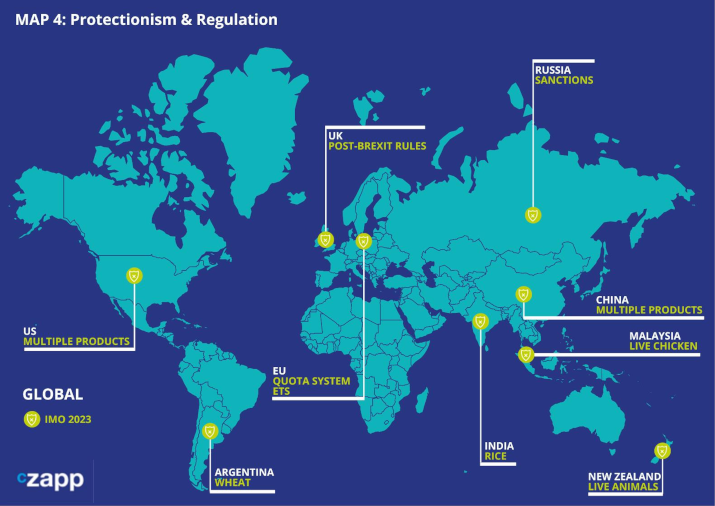
In the US, the protectionist measures imposed by former president Donald Trump are still largely in place. A review is currently in place, but US Trade Representative Katherine Tai is in favour of keeping them in place. But President Biden has advised against maintaining the trade tariffs imposed on Chinese imports as the world is faced with supply shortages.
Elsewhere in the Americas, Argentina is reportedly considering a restriction in wheat exports as its crop is hit by drought and the cost of living rises. India has also banned exports of broken rice, which is having a significant impact on lower-income countries for whom Indian products were more affordable than others on the market.
In Europe, the UK is still trying to negotiate post-Brexit trade deals. This means that many products into and out of Europe that were previously tariff-free are now subject to additional fees.
Weather Continues to Challenge Supply Chain
One of the most significant factors that have caused the most chokepoints this year has been adverse weather events. Extreme weather is becoming more and more common as the climate changes and the logistics industry is paying the price.
Pakistan has experienced the most severe flooding in recent history caused by torrential monsoon rains, which have washed away entire villages. In South Africa earlier in the year, floods washed away vital roads and caused chaos for the country’s main port of Durban.
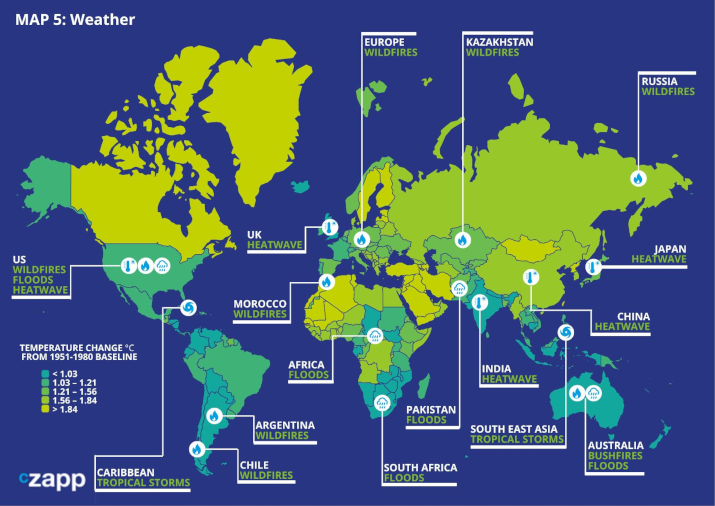
Across Europe, where weather is typically moderate, this summer has seen a host of record temperatures, triggering wildfires. In some areas, there has also been flooding. Global temperatures have been rising, with regions in Africa, the Middle East, Canada, Russia and China now experiencing average temperatures that are 1.5 degrees Celsius above levels just 50 years ago.
This is likely to be a long-term phenomenon and is likely to worsen in years to come. The weather situation is a challenge for everyone across the food supply chain, from producers to logistics firms and even those involved in energy generation.
Concluding Thoughts
- Globally, logistics have a great deal to contend with.
- Not only do importers and exporters need to consider freight prices and availability, but they also need to take into account geopolitical issues around the world.
- The prevalence of protectionism and friend shoring is increasing as countries look to shore up supply.
- Ongoing conflicts, protests and instability around the world risk upending supply chains.
- The supply of raw materials and energy is also vital for continued operations.
- One of the most important issues to keep an eye on is weather and climate change as major weather events create huge disruption.
